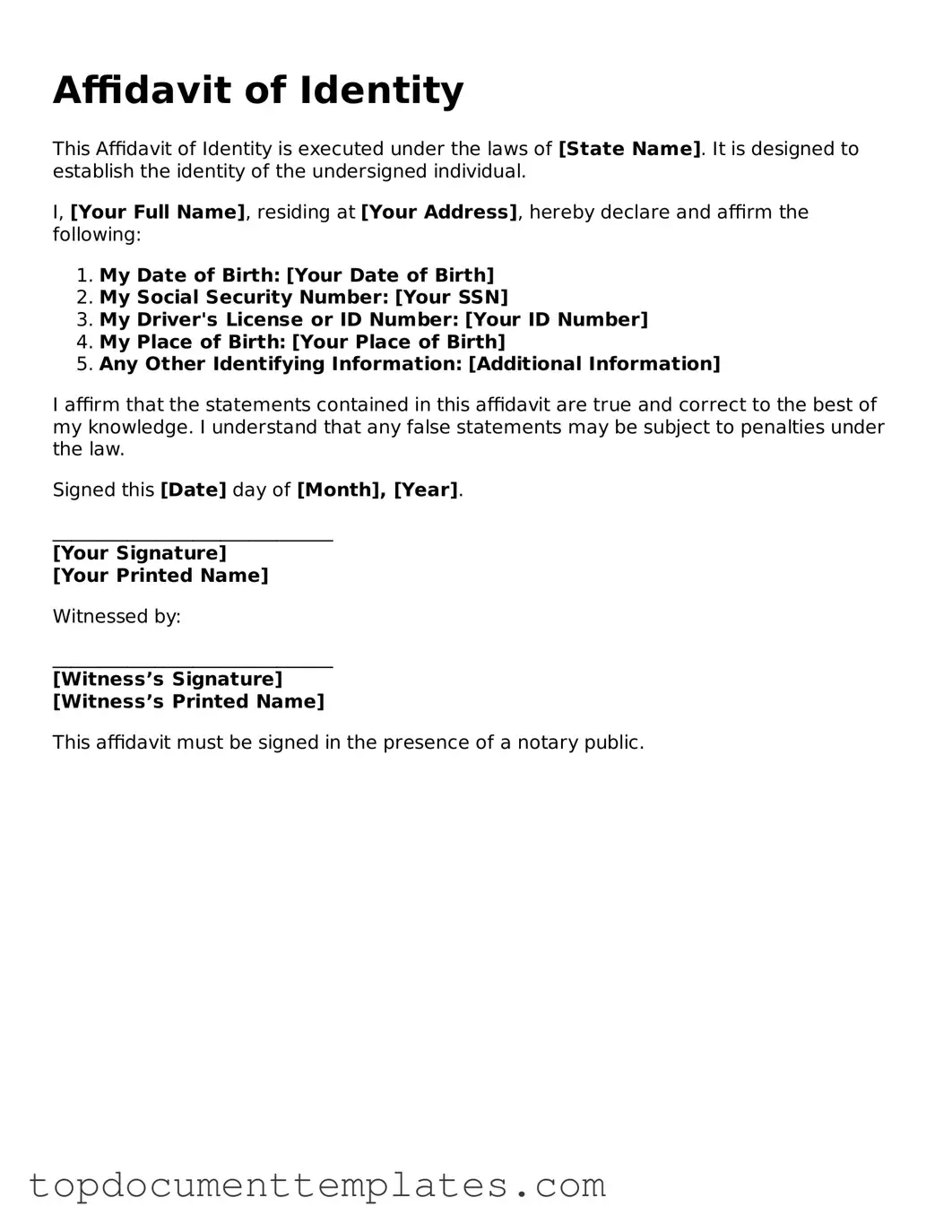The Affidavit of Identity form serves as a crucial document in various legal and administrative processes, providing a reliable means for individuals to confirm their identity when required. This form is often utilized in situations where a person needs to verify their identity for legal transactions, such as opening bank accounts, applying for loans, or obtaining government-issued identification. It typically requires the individual to provide personal information, including their full name, date of birth, and current address, along with any previous names they may have used. Furthermore, the form often includes a section for witnesses or notaries, ensuring that the identity verification process is credible and legally binding. Understanding the importance of this form is essential, as it helps prevent identity fraud and ensures that individuals can access the services and rights to which they are entitled. As such, completing the Affidavit of Identity accurately and thoroughly is vital for anyone navigating legal or financial systems that require proof of identity.
